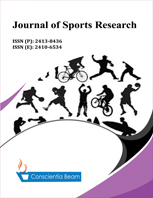Dual-Motor Balance Tasks Prompts Slight Lower Limb Neuromuscular Adaptations in Healthy Young Adults
DOI:
https://doi.org/10.18488/90.v9i2.3019Abstract
Previous literature has analyzed muscular recruitment patterns in various populations during complex balance conditions that involve a secondary task. This inquiry seeks to determine whether challenging sensory systems in young adults during single and dual-motor tasks can prompt modifications in neuromuscular patterns at the hip and leg musculature. Our study included twenty-nine healthy young adults (3 males and 25 females) with an average age of 24.3+/-2.4. Electromyography (EMG) electrodes were used to collect EMG data, and the variables of interest include the onset of muscle contraction, the decay of muscle contraction, peak muscle activation, and duration of muscle contraction. Five balance activities were conducted while performing a dual-motor task, while sensory input was altered in each condition. No significant changes in EMG activity were observed in the gastrocnemius (GA) and (TA) muscle activity. However, a tendency was observed in the onset and duration values of the gluteal muscles. Recruitment of the TA and GA remained uniform across variables, but gluteus maximus (GMax) and medius (GMed) activity appeared sooner (onset) and lasted longer (duration). Comparability in muscle recruitment during dual-task balance activities indicates healthy young adults can successfully rely on other sensory systems for balance when one or more networks are altered. Increases in GA and TA activity suggested a greater need for ankle strategies during the condition trials, while increased GMax and GMed activity indicated the same for hip strategies. Further research should examine joint kinematic to discern any adaptations during dual-motor tasks in young, healthy adults.

